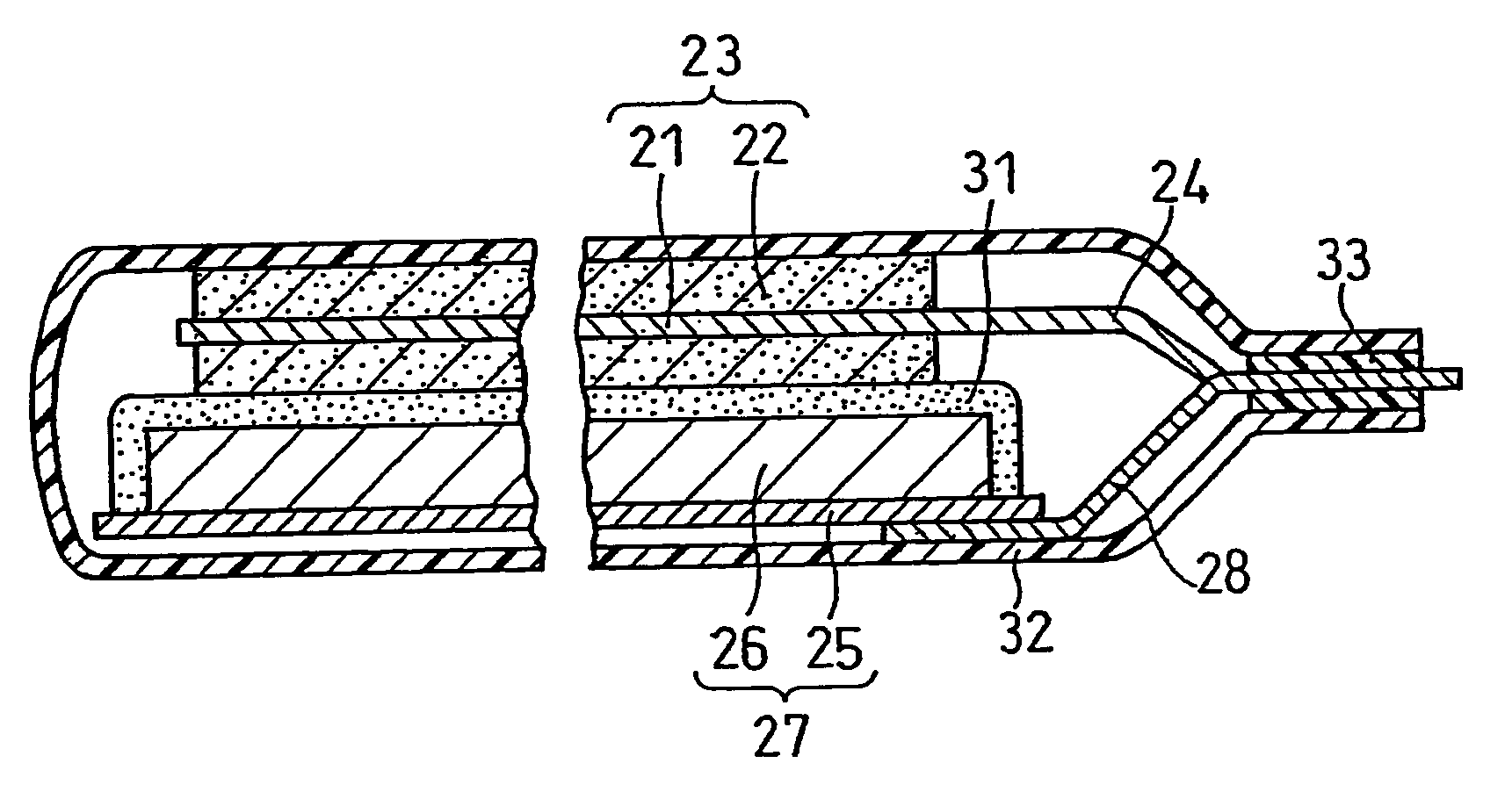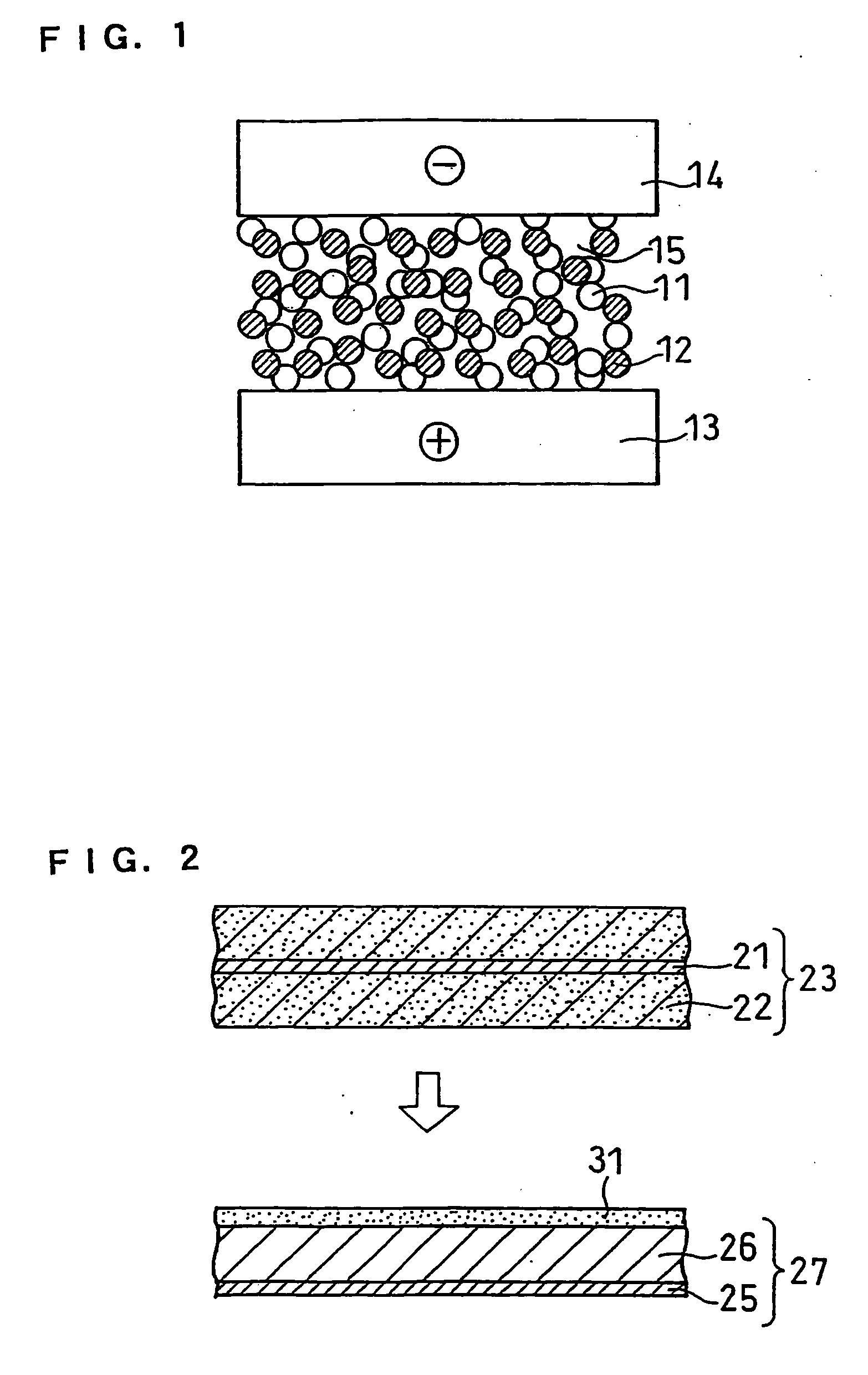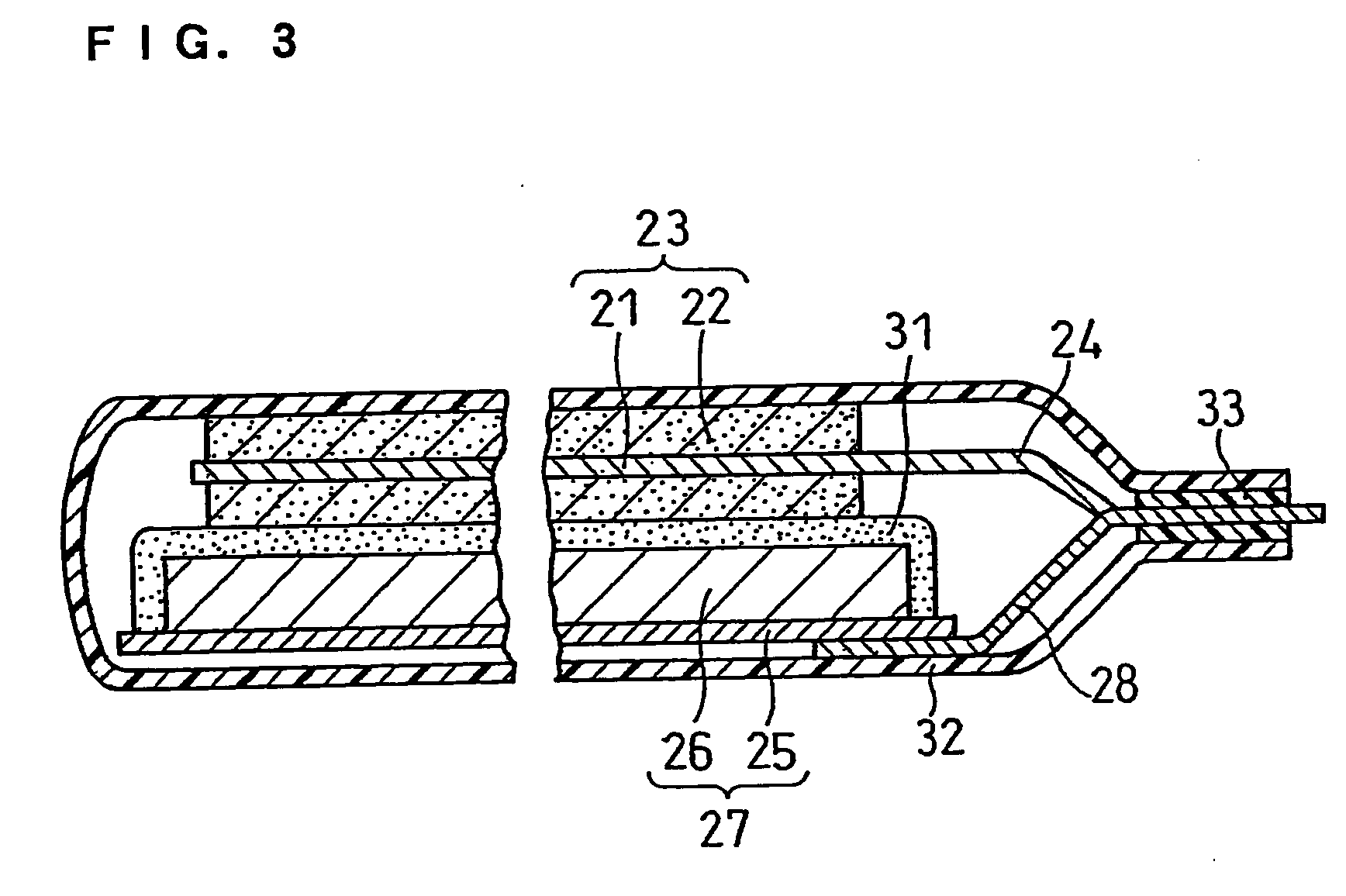Lithium ion secondary battery
a secondary battery and lithium ion technology, applied in secondary cell servicing/maintenance, cell components, sustainable manufacturing/processing, etc., can solve problems such as problems, achieve higher lithium ion acceptability, prevent deformation of negative electrodes, and improve the safety of lithium ion secondary batteries
- Summary
- Abstract
- Description
- Claims
- Application Information
AI Technical Summary
Benefits of technology
Problems solved by technology
Method used
Image
Examples
example 1
[0117]FIG. 2 and FIG. 3 are referred to in the following explanation.
(a) Preparation of Raw Material Paste of Porous Film
[0118] A raw material paste for a porous film was prepared by dispersing a filler and a first binder in N-methyl-2-pyrrolidone (NMP) in the ratios shown in Table 1, and then kneading them. The total content of the filler and the first binder in the paste was set as 50 wt % in any of the case.
[0119] For the first binder, core-shell type rubber particles including an acrylonitrile unit (a first rubber) and polyvinylidene fluoride (PVDF) with a molecular weight of 350,000 were used in combination.
[0120] Herein, for the core-shell type rubber particles, BM500B (average particle size 0.2 μm) manufactured by Zeon Corporation, comprising acrylonitrile-acrylate copolymer was used.
[0121] Physical properties of BM500B are shown in the following.
[0122] Crystalline Melting Point: None (amorphous)
[0123] Decomposition Temperature: 308.5° C.
[0124] Affinity With Water: W...
example 2
Battery A1
(a) Preparation of Raw Material Paste of Porous Film
[0145] A raw material paste for porous film was prepared by kneading 970 g of alumina with a median diameter of 0.3 μm as a filler, 375 g of BM-720H (NMP solution containing 8 wt % of a first rubber including a polyacrylonitrile chain as a first binder) manufactured by ZEON Corporation, and an appropriate amount of NMP in a double-arm kneader.
[0146] Physical properties of BM-720H are shown below.
[0147] Crystalline Melting Point: None (amorphous)
[0148] Decomposition Temperature: 320° C.
[0149] Affinity With Water: Water-Insoluble
(b) Fabrication of Positive Electrode
[0150] A positive electrode material mixture paste was prepared by mixing 3 kg of lithium cobaltate, 1 kg of PVDF#1320 (NMP solution containing 12 wt % of PVDF) manufactured by Kureha Chemical Industry Co., Ltd. as a binder, 90 g of acetylene black, and an appropriate amount of NMP, with a double-arm kneader. This paste was applied on an aluminum foil ...
example 3
Battery C1
(a) Preparation of Raw Material Paste of Porous Film
[0222] A raw material paste for porous film was prepared by mixing 970 g of AKP50 (α-alumina with a median diameter of 0.1 to 0.3 μm) as a filler manufactured by Sumitomo Chemical Co. Ltd., 375 g of BM-720H manufactured by ZEON Corporation (NMP solution containing 8 wt % of the first rubber including a polyacrylonitrile chain as a first binder), and an appropriate amount of NMP in the double-arm kneader.
[0223] Properties of BM-720H are shown in the following.
[0224] Crystalline Melting Point: None (amorphous)
[0225] Decomposition Temperature: 320° C.
[0226] Affinity with Water: Water-Insoluble
[0227] The properties of AKP50 are shown in the following.
[0228] Surface Alkalinity: pH=9
[0229] BET Specific Surface Area: about 10 m2 / g
[0230] Heat Resistance: 250° C. or more
[0231] As shown in the above, since alkalinity of AKP50 was pH=9, it was confirmed that AKP50 had an alkaline site on its surface.
[0232] Also, it is ...
PUM
 Login to View More
Login to View More Abstract
Description
Claims
Application Information
 Login to View More
Login to View More - R&D
- Intellectual Property
- Life Sciences
- Materials
- Tech Scout
- Unparalleled Data Quality
- Higher Quality Content
- 60% Fewer Hallucinations
Browse by: Latest US Patents, China's latest patents, Technical Efficacy Thesaurus, Application Domain, Technology Topic, Popular Technical Reports.
© 2025 PatSnap. All rights reserved.Legal|Privacy policy|Modern Slavery Act Transparency Statement|Sitemap|About US| Contact US: help@patsnap.com



